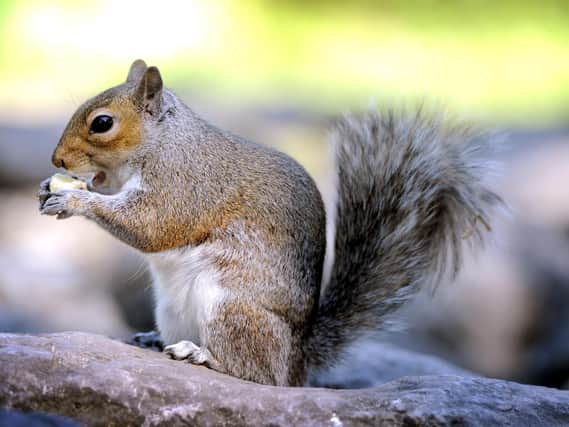A new contraceptive for grey squirrels could help the endangered red squirrel thrive


The UK Squirrel Accord has raised funds for the five-year project to convert a proven injected contraceptive for grey squirrels into an oral version.
The accord is a nationwide partnership of 37 organisations including the Department for the Environment, Food and Rural Affairs, the National Trust, the Wildlife Trusts and Red Squirrel Northern England, and the research is being carried out by the Animal and Plant Health Agency.
Advertisement
Hide AdAdvertisement
Hide AdThe director of the UK Squirrel Accord, Kay Haw, said that the contraceptive was still in the laboratory phase, but if testing was effective, it could provide a humane and less labour intensive way to manage grey squirrels.
She added that the accord is looking at species-specific feeding hoppers as a way to administer the contraceptive using the “weighted door” method.
The specially-adapted feed hoppers mean the generally larger and heavier grey squirrel can access the food while its smaller and lighter red counterpart could not.
“We obviously want to avoid red squirrels or other animals such as pine martins getting to the contraceptive,” Ms Haw said.
Advertisement
Hide AdAdvertisement
Hide AdShe added that the accord was also looking at the most cost effective and least labour intensive ways of administering it, particularly as a large amount of conservation work around the red squirrel was carried out by volunteers.
Trials have been taking place to monitor food uptake by grey squirrels in smaller woods, with a volunteer-led trail taking place in conjunction with the British Association for Sporting Conservationists (BASC) and the Deer Initiative in larger woodland.
The purpose of the trail was to not only monitor the food uptake, but also to look at the feasibility of volunteer groups successfully installing the hoppers in future.
Since its introduction in 19th century, the North American imported grey squirrel has decimated its native red counterpart.
Advertisement
Hide AdAdvertisement
Hide AdBut conservation figures have shown encouraging results in the fight to increase red squirrel numbers.
North Yorkshire has a stable population living in the Yorkshire Dales National Park – which stretches into Cumbria.
Red squirrels thrive in conifer woodland, which is the only habitat where they can out-compete with the grey squirrel. The 2019 survey by the Northumberland Wildlife Trust also showed North Yorkshire had the greatest difference in detection percentages between red and grey squirrels.
Red squirrels were spotted at 14 of the 20 sites, with grey squirrels detected in only five.
Advertisement
Hide AdAdvertisement
Hide AdFurther north, a survey published yesterday by Saving Scotland’s Red Squirrels reported “stable” figures for Scotland with a continuing decline in grey squirrel territory in the north-east of the country.
But project manager Dr Mel Tonkin warned that while the small changes in favour of red squirrels in the south of Scotland were promising, survey results could fluctuate from year to year.
“For now, we can say that red squirrel distributions in the region are stable, this is worth celebrating, and it is only possible thanks to ongoing work by volunteers, land managers and many others,” he said.